Lancashire Hotpot
Lancashire Hotpot is that rare dish that warms you from the inside out with tender chunks of lamb, sweet carrots, and a gloriously crispy potato topping. This is what happens when simple ingredients transform into something absolutely magical after a slow, patient cook in the oven.
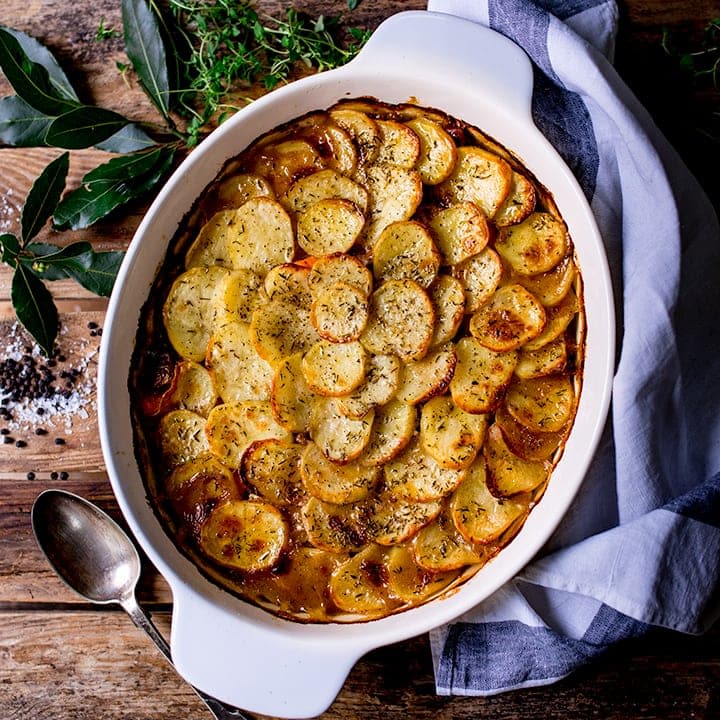
The beauty of Lancashire Hotpot lies in its honest simplicity. Dating back to the industrial north of England, this one-pot wonder was designed to simmer away while factory workers were out earning their keep. When they returned home, a rich, hearty meal awaited them. The contrast between the meltingly tender meat below and the golden, crispy potato crust on top creates that perfect textural balance that makes you close your eyes with each bite.
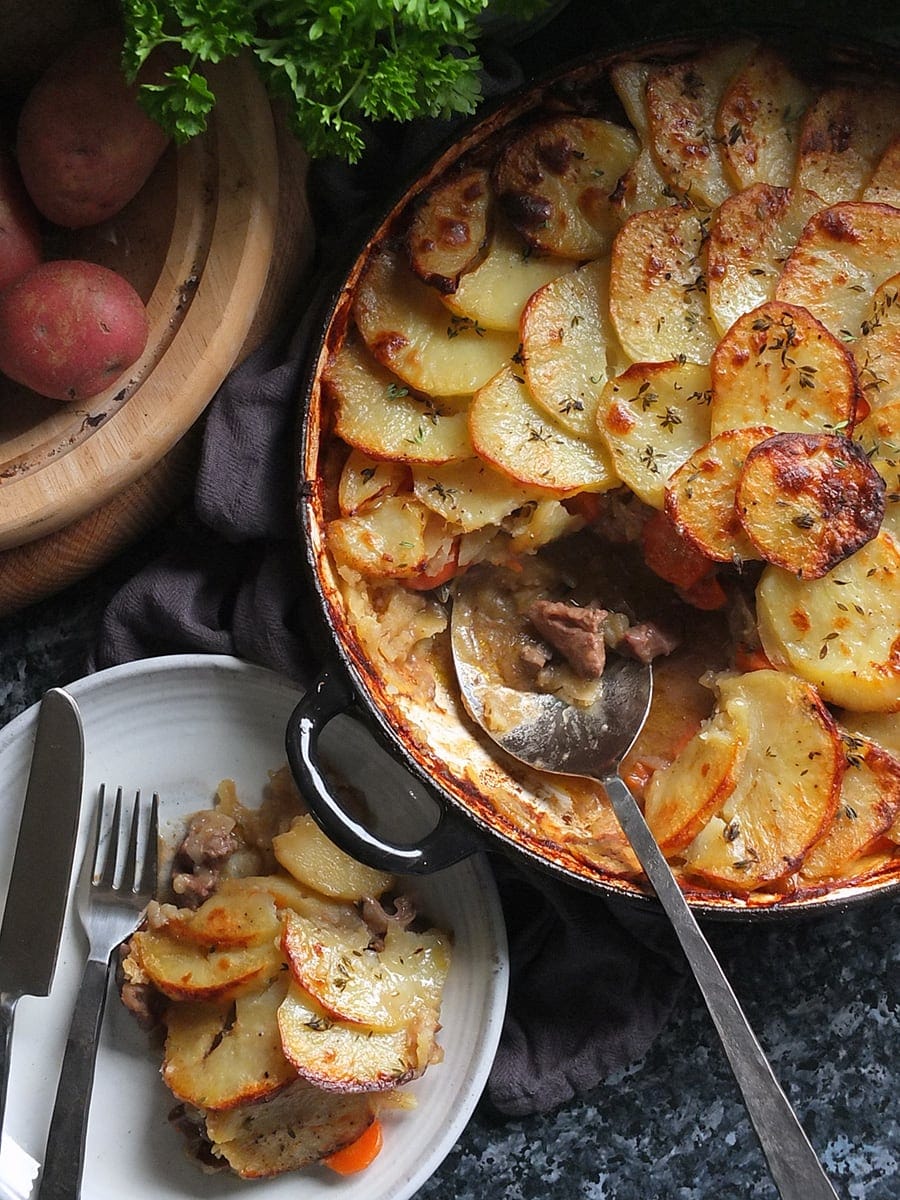
Ingredients
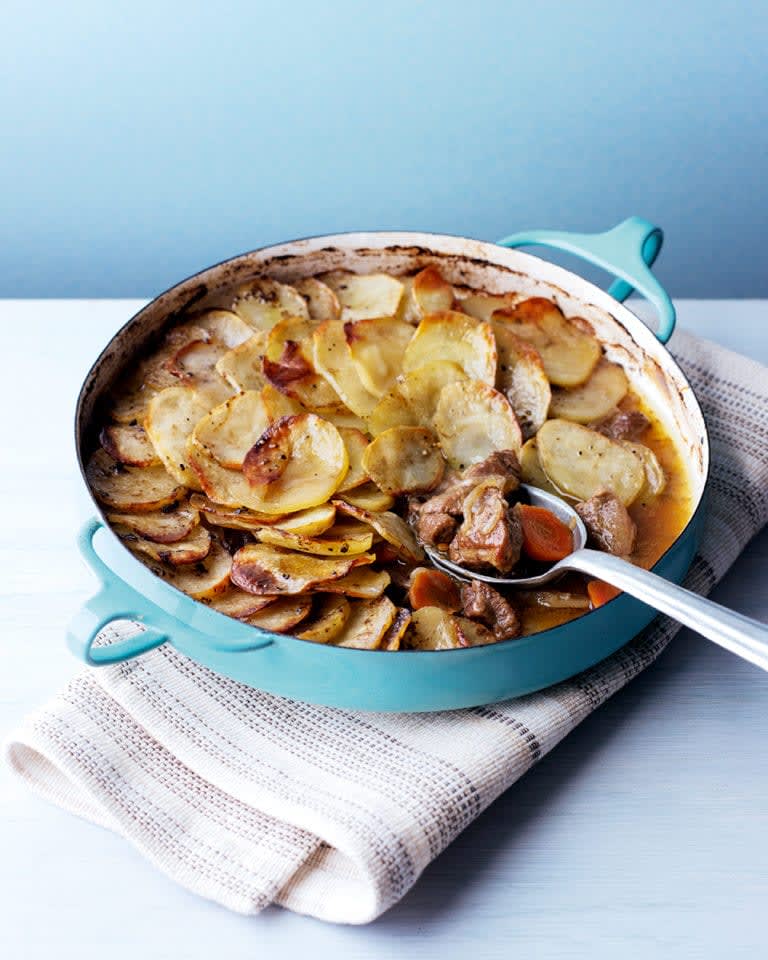
For the base:
- 1 tbsp butter
- 1 tbsp vegetable oil
- 500 g (1.1 lbs) lamb (not too lean – neck is best, but shoulder works well too), cut into bite-size chunks
- 2 brown onions, peeled and sliced thinly
- 1 heaped tbsp plain (all-purpose) flour (use gluten-free plain flour if required)
- 480 ml (2 cups) hot chicken or vegetable stock (water with a couple of stock cubes is fine – or use bouillon for gluten free)
- 2 bay leaves
- ½ tsp salt
- ½ tsp ground black pepper
- 1 tbsp Worcestershire sauce (use a gluten-free version if required)
- 3 medium-sized carrots, peeled and cut into chunks
For the topping:
- 680 g (1.5 lbs) potatoes, peeled and sliced to 2-3mm thick (floury potatoes such as Maris Pipers work best)
- 1 tbsp melted butter for brushing
- ¼ tsp dried thyme
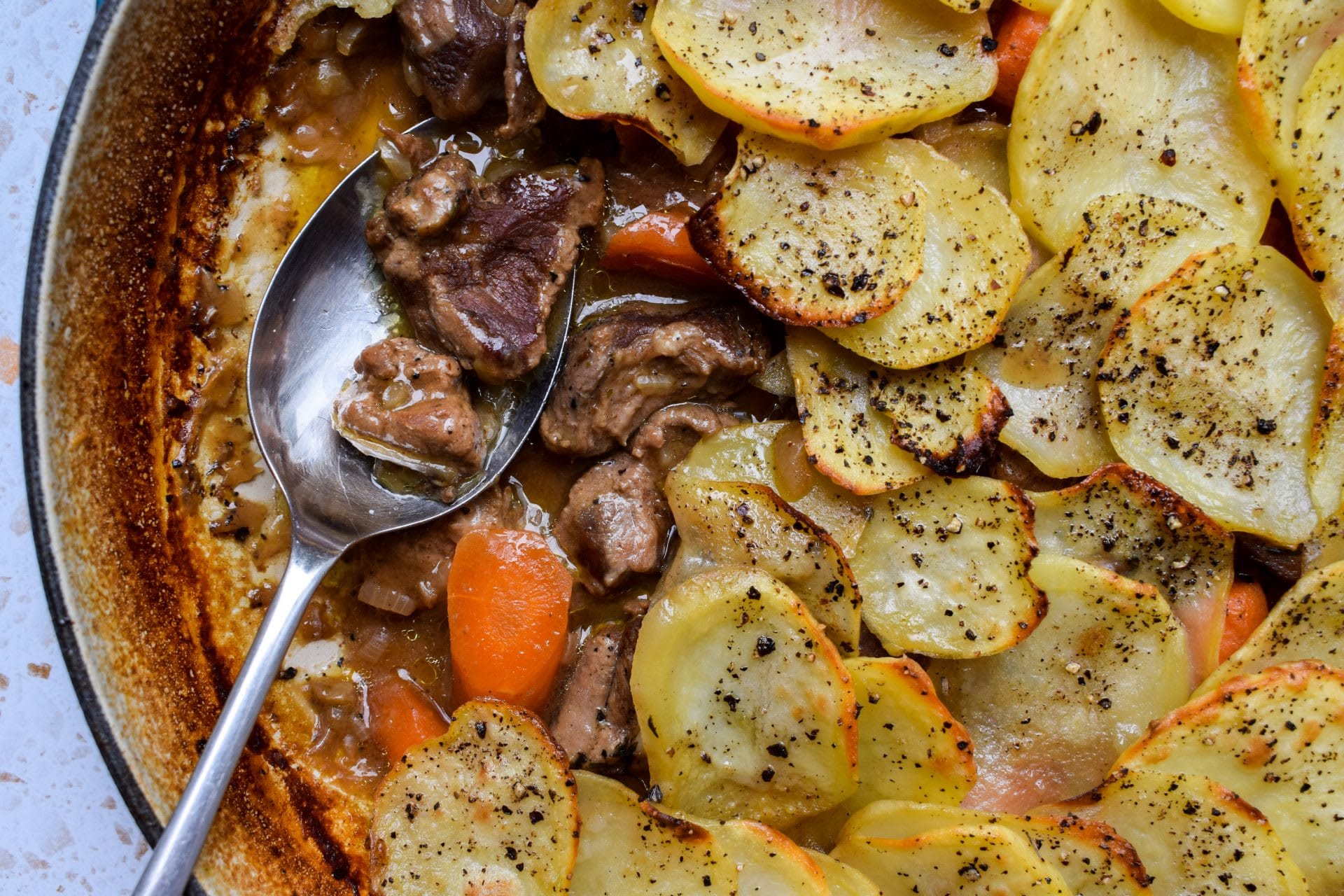
Steps
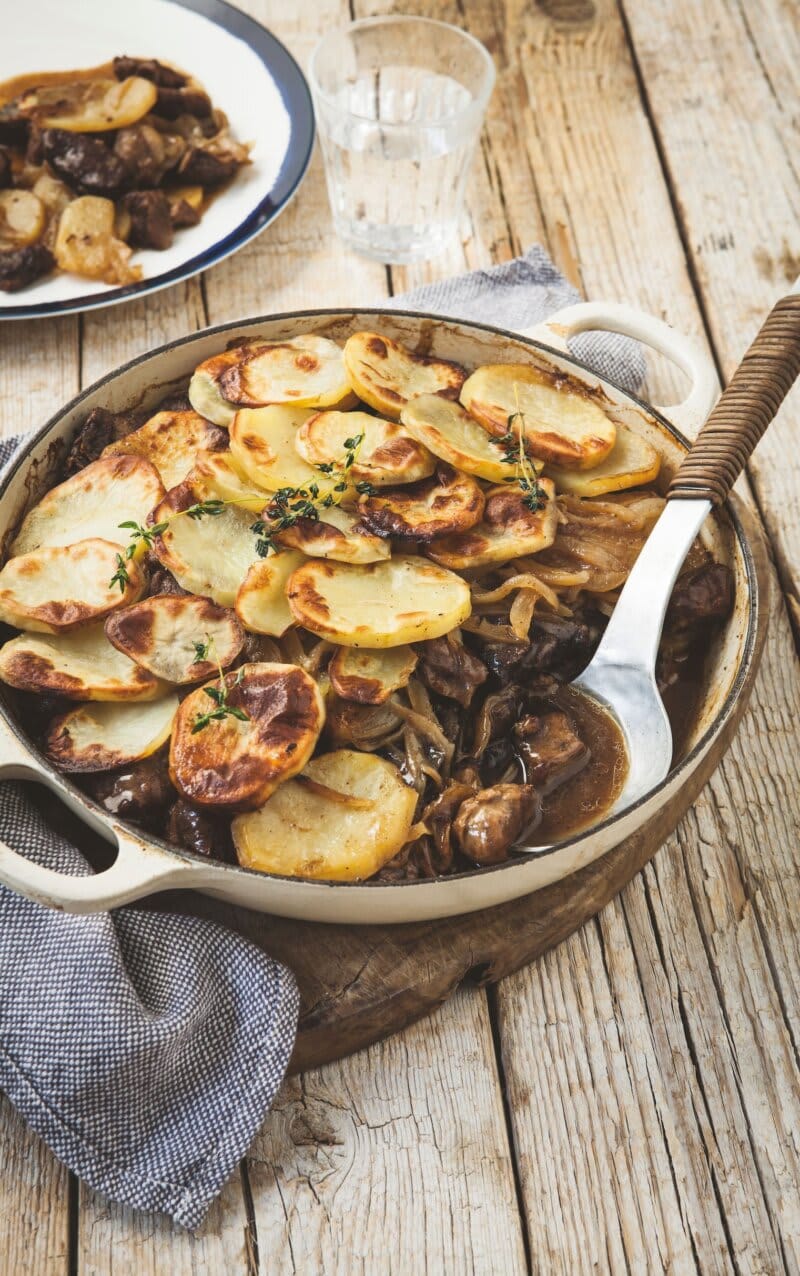
- Preheat the oven to 170°C/325°F (fan). This moderate temperature is crucial for the slow cooking that makes the lamb beautifully tender without drying out.
- Melt the 1 tbsp butter and 1 tbsp vegetable oil in a medium-sized ovenproof casserole or saucepan over medium-high heat. When the fat is shimmering but not smoking, add the lamb and fry until lightly browned all over (about 3-4 minutes). Look for a nice caramelization on the meat – this develops flavor but don’t overcrowd the pan or the meat will steam rather than brown. Spoon the lamb into a bowl, leaving the flavorful fat behind.
- Add the sliced onions to the same pan and cook for 3-4 minutes, stirring regularly, until soft and translucent but not browned. The onions should become slightly sweet as they soften.
- Return the lamb to the pan and sprinkle in the 1 heaped tbsp flour. Stir continuously for 1 minute to cook out the raw flour taste and create a roux that will thicken your sauce beautifully.
- Gradually pour in the 480 ml (2 cups) hot stock while stirring to prevent lumps from forming. Add the 2 bay leaves, ½ tsp salt, ½ tsp pepper, and 1 tbsp Worcestershire sauce. Give everything a good stir and bring to a gentle bubble. The mixture should be thin at this point but will thicken during cooking.
- Place a lid on the casserole and transfer to the preheated oven. Cook for 30 minutes to allow the flavors to begin melding and the meat to start tenderizing.
- After 30 minutes, carefully remove from the oven and stir in the carrot chunks. The liquid should have thickened slightly by now. At this point, you can transfer the contents to a casserole or pie dish if your original pan isn’t suitable for the full cooking time (I used a 25cm/10-inch diameter pie dish).
- Arrange the sliced potatoes on top in an overlapping pattern. Start from the outside edge and work your way in circles toward the center, like laying roof tiles. This creates the most attractive finish and ensures even cooking.
- Brush the potato slices with the 1 tbsp melted butter using a pastry brush, making sure to cover all exposed surfaces. This is what will create that gorgeous golden crust. Sprinkle evenly with the ¼ tsp dried thyme.
- Cover with a lid or tightly with foil and return to the oven for 1 hour. The covered cooking allows the potatoes to steam and become tender without browning too quickly.
- After the hour is up, increase the oven temperature to 200°C/400°F (fan) and remove the lid or foil. Cook for a further 30 minutes until the potatoes are beautifully browned and crisp on top. You’re looking for a deep golden color with slightly curled edges on the potatoes.
- Remove from the oven and allow to rest for 5 minutes before serving. This resting time is important as it allows the bubbling hot filling to settle and thicken slightly, making it easier to serve and less likely to burn your mouth!
- Serve with simple steamed green vegetables like peas, green beans, or broccoli to balance the richness of the hotpot.
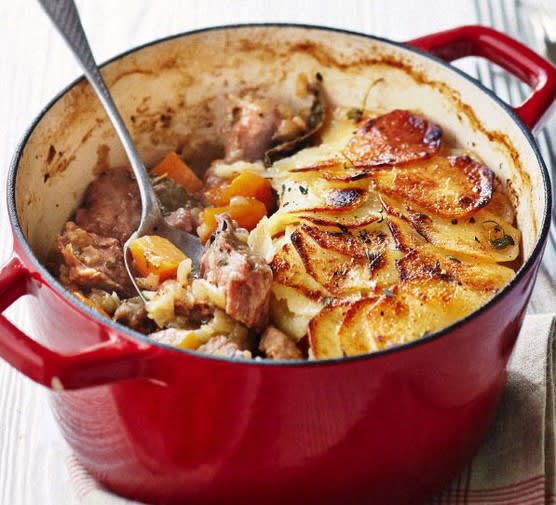
Smart Swaps
- Beef chunks can replace lamb at a 1:1 ratio for a different but equally delicious flavor
- Sweet potatoes can substitute regular potatoes for a lower glycemic index option (use the same weight)
- Rosemary (use ½ tsp) makes a wonderful alternative to thyme if you prefer its stronger flavor
- Mushrooms (about 200g/7oz) can be added with the carrots for an earthier flavor profile
Make It Diabetes-Friendly
- Replace regular potatoes with celeriac slices (same weight) to reduce carbs by approximately 15g per serving
- Use turnips (same weight as potatoes) for a carb reduction of approximately 18g per serving
- Add 1 tsp of grated ginger to the meat mixture to help moderate blood sugar response
- Serve smaller portions (150g instead of 200g) alongside a large green salad dressed with 1 tbsp olive oil and lemon juice to reduce the glycemic load
Pro Tips
- Slice the potatoes to a consistent thickness (about 2-3mm) using a mandoline for even cooking
- For extra richness, add 2 tbsp of red wine when adding the stock
- The hotpot actually tastes better the next day after flavors have melded overnight in the refrigerator
- If the potato topping isn’t browning enough in the final stage, place under the broiler/grill for 2-3 minutes, watching carefully to prevent burning